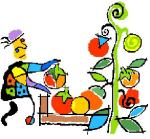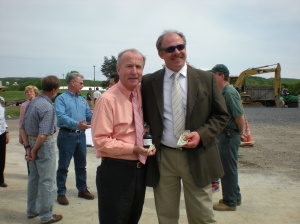 A decade ago, at one of the newspapers I used to work at, a friend and I kept a folder entitled “Stories You Can’t Make Up”. Whenever a wire service or a competitor ran a piece that was too bizarre to be anything but true, we would clip it and file it away. I think both of us wanted to write fiction, and needed a reminder of just how far we could stretch a plot.
A decade ago, at one of the newspapers I used to work at, a friend and I kept a folder entitled “Stories You Can’t Make Up”. Whenever a wire service or a competitor ran a piece that was too bizarre to be anything but true, we would clip it and file it away. I think both of us wanted to write fiction, and needed a reminder of just how far we could stretch a plot.
This past week, there was a story that would likely have made that folder. According to The New York Times, Frito-Lay and several other big food companies are trying to contend that what they make qualifies as local food. Their reasoning goes something like this: We source our potatoes close to the processing plant, so therefore we–and you our consumer–are “locavores”. Fine, I suppose if you leave out the fact that these are giant, single-crop operations and the resulting chips still need to be trucked long distances to the consumers.
It pains me that Frito-Lay is participating in this charade, because of all the food giants, it has made serious steps toward more sustainable manufacturing, converting plants in California and Arizona to solar power.
But towards the end of the Times story is a truly head-scratching quote from a grocery industry analyst now shilling for ConAgra:
“The problem is there is absolutely no way we can have local produce within 100 miles of every person in America, so the question is how do we take it to that next level…”
The analyst’s bio, by the way, notes that while he is now a resident of California, his grandfather once had a dairy in Belleville, N.J.
So if anyone has a suggestion for what we should now call people who support earth-friendly farms close to their homes, I’d love to hear it…
Filed under: Grist For The Mill | Tagged: ConAgra, Frito-Lay, Local Food, Locavore | Leave a comment »






 A decade ago, at one of the newspapers I used to work at, a friend and I kept a folder entitled “Stories You Can’t Make Up”. Whenever a wire service or a competitor ran a piece that was too bizarre to be anything but true, we would clip it and file it away. I think both of us wanted to write fiction, and needed a reminder of just how far we could stretch a plot.
A decade ago, at one of the newspapers I used to work at, a friend and I kept a folder entitled “Stories You Can’t Make Up”. Whenever a wire service or a competitor ran a piece that was too bizarre to be anything but true, we would clip it and file it away. I think both of us wanted to write fiction, and needed a reminder of just how far we could stretch a plot.